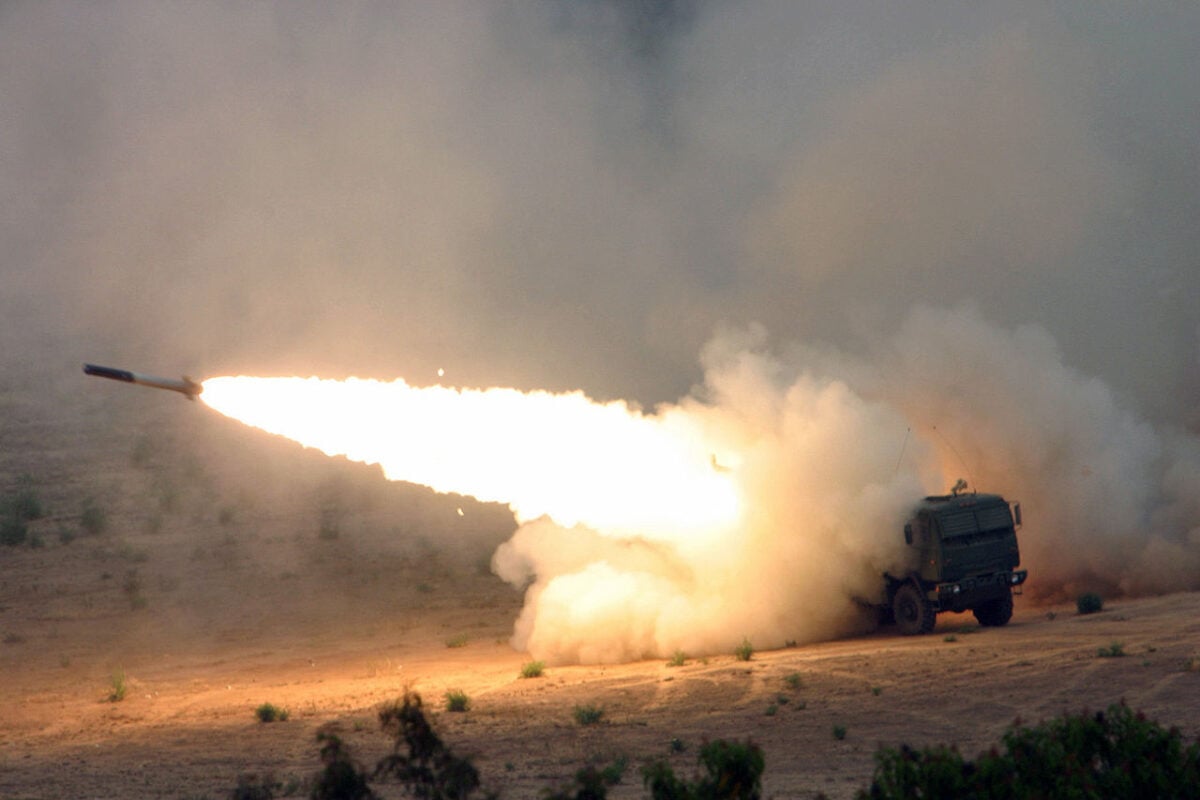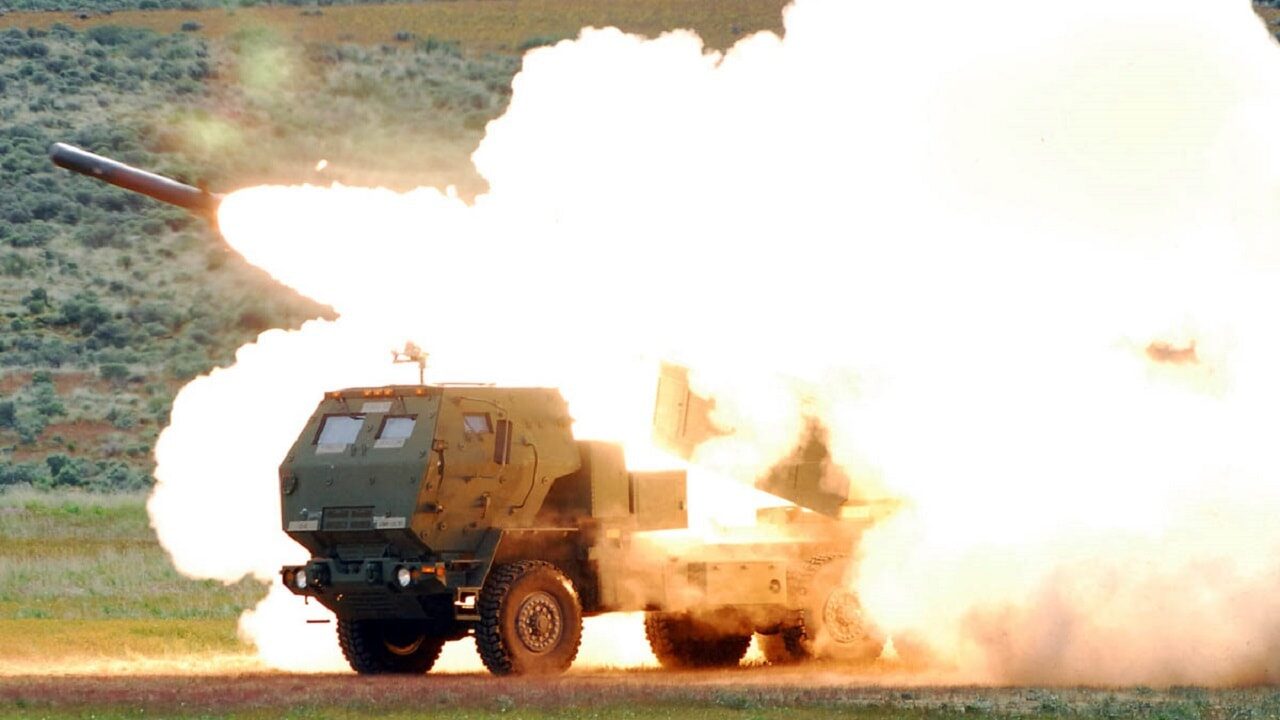HIMARS: Why Russia will hate this military platform if it is indeed in Ukraine – Ukrainian artillery played a decisive role in repelling Russia’s failed campaign to capture Kyiv in the first weeks of the war—by some assessments, destroying more Russian armored vehicles than anti-tank missiles. It is arguably of even greater importance in Russia’s new campaign in Eastern Ukraine, where a grinding battle of attrition is taking place between heavily entrenched forces.
While the U.S. is delivering 90 towed M777 field howitzers to Ukraine, it apparently also furnishing another potent form of artillery: Multiple Rocket Launcher Systems (MRLSs).
In an interview with Ukrainian Pravda, U.S. Under Secretary of State for Political Affairs, Victoria Nuland stated that thanks to U.S. military aid, Ukraine “already has multiple launch rocket systems”, though these had not been specifically listed as part of extended aid packages.
When pressed on the discrepancy, she made it “absolutely clear” that “We already supply MLRS systems. And it wasn’t just us.”
The implication seemingly is that U.S. MRLS transfers had been kept under the table until this interview. Nuland’s reference to “it wasn’t just us” likely refers to confirmed transfers of at least 20 Czech RM-70 systems and at least 20 similar Polish BM-21 rocket launchers.
Though quantity, type, and even presence in Ukraine remain uninformed, many believe the U.S.-supplied MRLS is the M142 HIMARS, developed as a more deployable lightweight complement to the Army’s 27.5-ton M270 MRLS. Indeed, in an address earlier in April, Pres. Zelensky specifically requested M270s or HIMARS systems. However, it’s also possible Nuland referred to U.S. stocks of Soviet launchers used for training.
Rocket launcher on a diet
In World War II, multiple rocket launchers, which had existed for centuries prior, matured into a formidable complement to traditional artillery. Compared to howitzers, MRLSs can unleash a huge number of munitions in a short period of time that land across a broader area, though with inferior precision and sustainability. Larger-caliber MRLSs also have better potential to deliver very long-distance fires than gun artillery.
Ukrainian began the war with three types of Soviet-developed MRLSs: around 200 BM-21 Grad which provides frontline artillery support, and about 75 each BM-27 Uragan and BM-30 Smerch systems that fire much bigger 220- and 300-millimeter rockets over greater distances. As of April 27, photos confirm Ukraine has lost at a minimum of 12 Grads and three Uragans but has captured at least 22 Grads and 2 Uragans from Russian forces.
In the 1980s, the U.S. Army finally sought to match Soviet enthusiasm for MRLSs by deploying the M270 multiple rocket launcher system based on the armored, tracked hull of a Bradley fighting vehicle. To compensate for the low precision inherent to MRLSs, its 227-millimeter M26 rockets (max range 20 miles) were designed to release 644 dual-purpose (anti-tank/anti-personnel) cluster bomblets over a wide area, rather than a single large warhead. Later M26A1 and A2 rockets had ‘only’ 518 DPICM submunitions, but the range extended to 28 miles.
The M270 carried twelve M26s in two pods, but those pods could alternately carry one powerful ATACMS missile with a range of 80 miles (later extended to 186 miles) to strike deep targets like air defense units, ammo, and fuel depots, headquarters, and airbases.
The M270 proved effective in the 1991 Gulf War, but they were difficult to maintain, supply and transport to the theater. Thus, the M142 High Mobility Artillery Rocket System (HIMARS) was developed in the 1990s to serve as a lightweight alternative that was rapid-deployable across the globe.

Based on the hull of a 6×6 FMTV truck, the 18-ton M142 uses the same rockets and fire-control system (FCS) as the M270 but mounts only one six-shot pod. Seemingly a downgrade in firepower output, new rocket types (see below) allow rocket strikes with less emphasis on volume. The mostly soft-skinned M142 retains an armored cabin for its crew of three (or two, in a pinch), and uses a more easily serviceable diesel engine.
Vitally, an M142 can fit in a C-130 transport plane, or three on a C-17 cargo jet; and they can roll off the ramp ready to fire within 15 minutes.
Both M142/M270 FCS can receive firing coordinates from higher headquarters and forward observers via a datalink and execute a fire mission within 16 seconds, posing a threat even to fleeting targets of opportunity. They both can rapidly shoot and scoot to evade enemy counterstrikes.
Cheaper precision firepower
Though the M270 was a beastly “map grid square removal system”, its wide-area destructiveness made it difficult to use in counter-insurgency wars fought close to population centers. Moreover, cluster bomblets were politically and materially hazardous, as high dud rates resulted in thousands of dangerous unexploded munitions remaining behind after the fighting, claiming the lives of civilians and U.S. military personnel alike.
Meanwhile, the long-range ATACMS, though potent, was too expensive (around $800,000 per shot) for routine use. By 2015, only 3,700 had been built, of which 650 were fired.
However, rocket artillery evolved dramatically with the introduction of GPS-guided M30 and M31 GMRLS rockets costing a more practical $110,000 per shot.
Their range of 43 miles still far exceeded that of traditional howitzer artillery, and these could land within 2 meters on average of the target, precise enough to employ individual non-cluster M31 munitions highly effectively.
Starting in 2014, U.S. Army and Marines deployed HIMARS in Iraq and Afghanistan delivered prompt precision attacks against ISIS and Taliban targets, arguably making an important contribution to defeating ISIS forces in the cities of Mosul and Raqqa, as well as repelling a massive attack by Syrian and Russian mercenaries in 2018.
At present, the Army has five HIMARS battalions in the 17th, 18th, and 75th Field Artillery Brigades, several batteries of which are integrated in the Army’s new Multi-Domain Task Force units. There are 12 more HIMARS battalions in eight National Guard brigades, while the Marine Corps maintains two HIMARS battalions in the 11th and 14th Marine Regiments.
Each battalion has 18 launcher vehicles, each supported by two ammo resupply vehicles with trailers, and a Target-Acquisition Platoon deploying AN/TPQ-47 Firefinder radars on flatbed Humvees to detect the origin point of enemy artillery firing up to 60 kilometers away. Since 2014, Ukraine has received many counterbattery radars and Humvee transporters from the U.S. and used them successfully in combat, so this capacity could be integrated readily into new HIMARS units.
Foreign HIMARS operators already include Singapore, the United Arab Emirates, Jordan, and Romania. Future HIMARS operators will include certainly Poland, likely Hungary and Taiwan, and potentially the Philippines and Sweden.
HIMARS has also been tested as an anti-ship weapon with mixed results and has even been modified to fire from a ship’s deck. That’s intriguing as in March Ukraine employed rocket artillery in Odesa to attack the Russian patrol ship Vasily Bykov, though causing limited if any damage. HIMARS therefore may have coastal defense potential, though Russia may keep its vessels out of range after the sinking of its flagship cruiser Moskva to land-based missiles.
HIMARS has also been tested to launch AIM-120 medium-range anti-air missiles; while that capability hasn’t been operationally deployed, it’s an example of how the launcher could be adapted to new roles. Ukraine would certainly like to shore up its medium-range air defenses, as most aid has been for short-range systems.
However, even using HIMARS in a conventional manner involves challenges for Ukraine, as HIMARS uses different munitions and requires Ukrainian crews to master the operation and maintenance of unfamiliar new systems.
A standard U.S. Marine crew training course for HIMARS takes 13 training days, not counting breaks. But specialists like the gunner and section chief require additional weeks of training. However, some interpret Nuland’s statement as indicating Ukrainians have been training to operate HIMARS (presumably outside Ukraine) for weeks while the delivery was arranged.
To ATACMS or not to ATACMS?
One issue is whether Ukrainian HIMARS come with MGM-168 ATACMS missiles, and if so, whether these will have conditions attached. The ATACMS’s range of 186 miles means it could potentially strike targets deeper in Russian territory than Ukraine’s Tochka ballistic missiles. Already it remains unclear if Ukrainian missiles are responsible for the destruction of oil depots on Russian soil.
This makes ATACMS more potentially escalatory than other heavy armament offered by Ukraine’s allies, not merely in Moscow’s perception, but if Ukraine uses it to strike targets deeper in Russia. Furthermore, the U.S. is developing an ATACMS successor called the Precision Strike Missile (PrSM) with a range of 300-500 miles.
Thus, there’s a good chance Washington will stop short of supplying ATACMS to Ukraine. Meanwhile, Poland and Romania, are receiving ATACMS missiles; Washington might restrict those being transferred to Ukraine.
Even without ATACMS, HIMARS systems using the guided GMLRS munitions will greatly enhance Kyiv’s ability to destroy Russian artillery and logistics from a safe distance—a capability it needs given Russia’s dependency on artillery and Ukraine’s lack of penetrating air power.
Russian forces in turn will attempt to locate and destroy the largely unarmored M142s, particularly using Orion and Forepost-R drones. Ukraine’s ability to relay useful and timely targeting data to HIMARS batteries, promptly shoot-and-scoot to avoid retaliatory fire, and keep them otherwise concealed will determine their success in the field.
Sébastien Roblin writes on the technical, historical, and political aspects of international security and conflict for publications including The National Interest, NBC News, Forbes.com, War is Boring and 19FortyFive, where he is Defense-in-Depth editor. He holds a Master’s degree from Georgetown University and served with the Peace Corps in China. You can follow his articles on Twitter.

